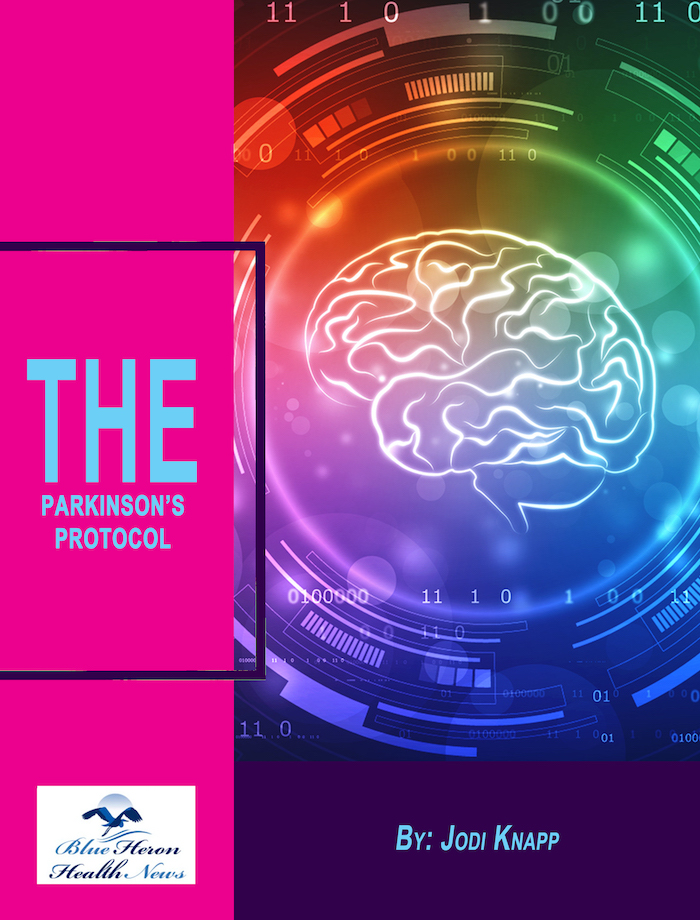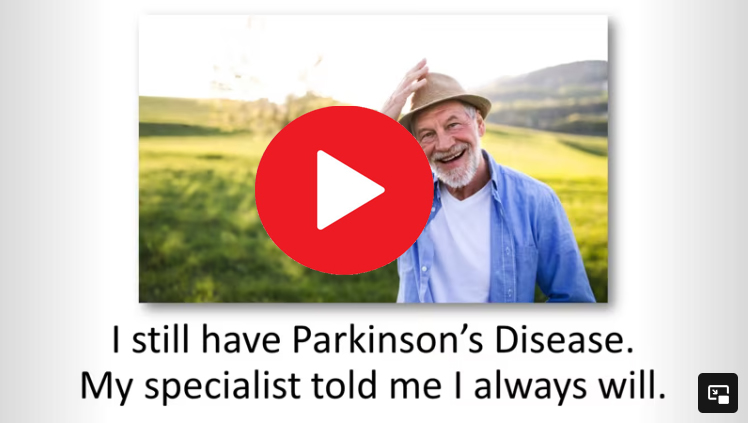
The Parkinson’s Protocol™ By Jodi Knapp Parkinson’s disease cannot be eliminated completely but its symptoms can be reduced, damages can be repaired and its progression can be delayed considerably by using various simple and natural things. In this eBook, a natural program to treat Parkinson’s disease is provided online. it includes 12 easy steps to repair your body and reduce the symptoms of this disease.
What are the motor symptoms of Parkinson’s disease?
Introduction
Parkinson’s disease (PD) is a progressive neurodegenerative disorder characterized primarily by its motor symptoms. These motor symptoms are often the most visible and debilitating aspects of the disease, significantly impacting the quality of life of those affected. This comprehensive analysis will explore the motor symptoms of Parkinson’s disease in detail, supported by clinical studies, research findings, and expert opinions.
1. Tremor
Resting Tremor
One of the hallmark symptoms of Parkinson’s disease is the resting tremor. This tremor typically begins in one hand, often described as a “pill-rolling” motion where the thumb and index finger move back and forth. Over time, the tremor can affect both hands, arms, legs, and even the jaw and face.
- Characteristics: The tremor occurs when the affected body part is at rest and diminishes with purposeful movement and during sleep.
- Frequency: The resting tremor usually has a frequency of 4-6 Hz (cycles per second) (RACGP) (NutsForLife) (Frontiers).
2. Bradykinesia
Slowness of Movement
Bradykinesia, or slowness of movement, is another cardinal symptom of Parkinson’s disease. It manifests as a generalized slowing of all physical movements, impacting daily activities and overall functionality.
- Symptoms: Patients often experience difficulty initiating movements (start hesitation), perform tasks more slowly, and may exhibit decreased spontaneous movements, such as blinking or gesturing.
- Impact: Bradykinesia can severely affect fine motor skills, making tasks like buttoning a shirt or writing increasingly difficult (NutsForLife) (Frontiers).
3. Rigidity
Muscle Stiffness
Rigidity refers to the stiffness and resistance to movement in the muscles, affecting both the limbs and trunk. This increased muscle tone can cause discomfort and pain.
- Types of Rigidity:
- Cogwheel Rigidity: Characterized by a ratchet-like resistance when the limb is moved passively, often seen in the arms.
- Lead-Pipe Rigidity: A uniform resistance throughout the entire range of motion.
- Symptoms: Muscle stiffness can reduce the range of motion and flexibility, leading to a decreased ability to perform everyday activities (RACGP) (GESA) (Frontiers).
4. Postural Instability
Balance and Coordination
Postural instability, or impaired balance and coordination, is a significant motor symptom of Parkinson’s disease, typically appearing in the later stages. It increases the risk of falls and associated injuries.
- Symptoms: Patients may have difficulty maintaining an upright posture, exhibit a stooped posture, and experience episodes of unsteadiness, particularly when turning or changing direction.
- Assessment: The “pull test” is a common method used to evaluate postural instability, where the patient is pulled backward by the shoulders and assessed on their ability to maintain balance (NutsForLife) (Frontiers).
5. Gait Abnormalities
Shuffling Gait
A common gait abnormality in Parkinson’s disease is a shuffling walk, characterized by short, dragging steps and a tendency to move more slowly.
- Symptoms: The gait may include difficulty initiating movement (gait freezing), reduced arm swing, and a festinating gait, where the steps become progressively shorter and quicker as the patient tries to maintain balance.
- Impact: These gait abnormalities can significantly increase the risk of falls and reduce mobility and independence (RACGP) (GESA).
6. Other Motor Symptoms
Micrographia
Micrographia refers to the gradual shrinking of handwriting that becomes increasingly small and cramped. This symptom is a manifestation of bradykinesia and affects fine motor control.
- Symptoms: Patients may notice that their handwriting starts normal but progressively gets smaller and harder to read, making written communication challenging (NutsForLife) (Frontiers).
Hypophonia
Hypophonia is a common speech problem in Parkinson’s disease, characterized by a soft, low voice that can be difficult to hear and understand.
- Symptoms: Patients may speak more softly, with a monotone voice, and may find it challenging to modulate their speech volume. This can impact effective communication and social interactions (RACGP) (GESA).
7. Impact on Daily Life
Activities of Daily Living (ADLs)
The motor symptoms of Parkinson’s disease significantly affect daily activities, such as dressing, eating, and personal hygiene. The combination of tremor, bradykinesia, rigidity, and postural instability makes these tasks challenging and time-consuming.
- Adaptations: Patients may need to use assistive devices, such as utensils with larger handles, button hooks, or walkers, to maintain independence in daily activities (NutsForLife) (Frontiers).
8. Clinical Assessment and Diagnosis
Unified Parkinson’s Disease Rating Scale (UPDRS)
The UPDRS is a comprehensive tool used to evaluate the severity and progression of Parkinson’s disease. It includes sections on mentation, behavior, and mood, activities of daily living, and motor examination.
- Motor Examination: This section assesses tremor, bradykinesia, rigidity, postural instability, and gait abnormalities, providing a detailed overview of motor symptom severity (RACGP) (GESA).
9. Treatment and Management
Pharmacological Treatments
Medications are the primary treatment for managing motor symptoms of Parkinson’s disease. These include:
- Levodopa: The most effective medication, often combined with carbidopa to enhance its effect and reduce side effects.
- Dopamine Agonists: Medications that mimic dopamine’s effects in the brain, such as pramipexole and ropinirole.
- MAO-B Inhibitors: Drugs like selegiline and rasagiline that inhibit the breakdown of dopamine.
- COMT Inhibitors: Medications that prolong the effect of levodopa by inhibiting the enzyme catechol-O-methyltransferase (NutsForLife) (Frontiers).
Non-Pharmacological Interventions
In addition to medications, non-pharmacological treatments play a crucial role in managing motor symptoms:
- Physical Therapy: Focuses on improving mobility, flexibility, balance, and strength through tailored exercise programs.
- Occupational Therapy: Helps patients maintain independence in daily activities by adapting tasks and using assistive devices.
- Speech Therapy: Addresses communication difficulties, such as hypophonia and dysarthria, by improving vocal strength and clarity (RACGP) (GESA).
Surgical Treatments
For patients with advanced Parkinson’s disease who do not respond adequately to medication, surgical options may be considered:
- Deep Brain Stimulation (DBS): Involves implanting electrodes in specific areas of the brain to regulate abnormal neural activity. DBS can significantly improve motor symptoms and reduce medication needs.
- Lesioning Surgeries: Such as pallidotomy and thalamotomy, which involve destroying small areas of brain tissue that contribute to symptoms (NutsForLife) (Frontiers).
10. Research and Future Directions
Advances in Treatment
Ongoing research aims to develop new treatments and improve existing ones for managing motor symptoms of Parkinson’s disease. This includes exploring neuroprotective strategies, gene therapy, and advanced deep brain stimulation techniques.
- Neuroprotective Strategies: Research is focused on finding treatments that can slow or halt disease progression, protecting the remaining dopamine-producing neurons.
- Gene Therapy: Advances in gene therapy hold promise for correcting genetic mutations associated with Parkinson’s disease, potentially providing a more targeted approach to treatment (RACGP) (GESA).
Conclusion
The motor symptoms of Parkinson’s disease, including tremor, bradykinesia, rigidity, postural instability, gait abnormalities, micrographia, and hypophonia, significantly impact the quality of life of those affected. Accurate diagnosis and comprehensive management, combining pharmacological, non-pharmacological, and surgical treatments, are essential for improving patient outcomes. Ongoing research continues to seek better ways to manage and treat these debilitating symptoms, offering hope for improved therapies in the future.
References
- Australian Bureau of Statistics (ABS), “National Health Survey: First Results, 2017-18,” ABS Website
- Parkinson’s Australia, “Parkinson’s Disease Statistics,” Parkinson’s Australia Website
- Mayo Clinic, “Parkinson’s Disease – Symptoms and Causes,” Mayo Clinic Website
- National Institute of Neurological Disorders and Stroke (NINDS), “Parkinson’s Disease Information Page,” NINDS Website
- Lancet Neurology, “Parkinson’s Disease: Mechanisms, Diagnosis, and Management,” Lancet Neurology Website

The Parkinson’s Protocol™ By Jodi Knapp Parkinson’s disease cannot be eliminated completely but its symptoms can be reduced, damages can be repaired and its progression can be delayed considerably by using various simple and natural things. In this eBook, a natural program to treat Parkinson’s disease is provided online. it includes 12 easy steps to repair your body and reduce the symptoms of this disease.